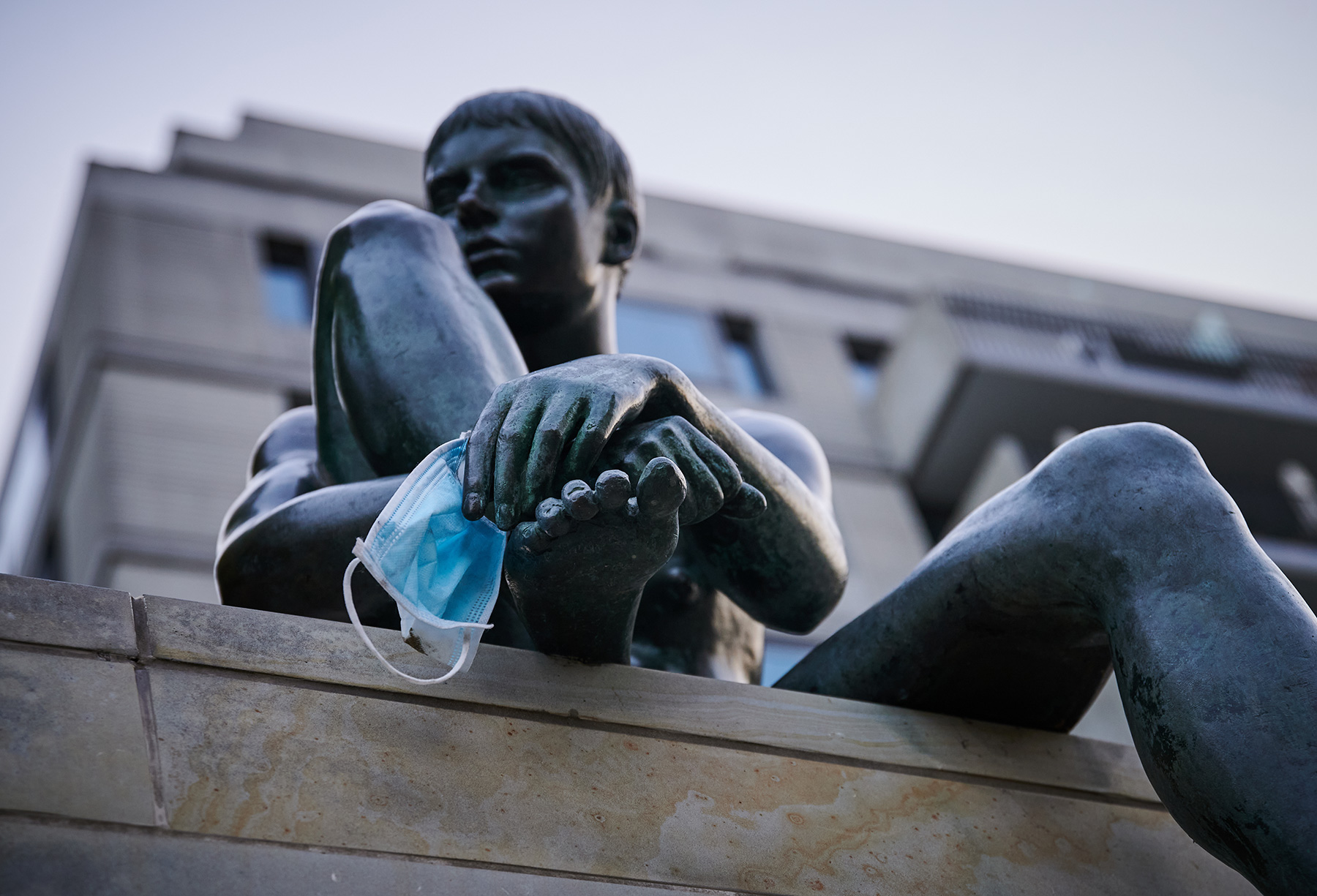Iceland, the world champion in terms of gender equality, seemed to have become the first country in Europe to have more women MPs than men, 33 versus 30. The news immediately made world headlines but nine hours later, news agencies around the world had to edit their headlines. The recount in the Northwest constituency affected the outcome across the country to delay the ‘triumph for women’ for another four years.
The parties are now to negotiate coalition formation. The most likely scenario now is that the ruling coalition of the Independence Party, the Left-Greens and the Progressives continues. It has been the most ideologically diverse and the first three-party coalition in Iceland’s history to last a full term. A successful fight against the pandemic has only strengthened its positions and helped it secure additional votes. Independence Party leader and finance minister Bjarni Benediktsson has earlier said he would be prepared to keep the ruling coalition if it holds the majority. President Guðni Jóhannesson announced immediately after the elections that he would confirm the mandate of the ruling coalition to form a new government if the three parties could strike a deal.
Other developments are possible but unlikely. Should the Left-Greens decide to leave the coalition, they could be replaced by the Reform Party or the People’s Party, while any coalition without the Independence Party can only be a four-party or larger coalition.
Who will become the new prime-minister still remains to be seen—but if the ruling coalition remains in place, the current prime-minister and leader of the Left-Greens, Katrín Jakobsdóttir, stands a good chance of keeping her post: she is still the most popular politician in Iceland with a 40 per cent approval rate.
The 2021 Althingi election, with one of the lowest turnouts in history at 80.1%, has not produced a clear winner. The election results reflect a Europe-wide trend in which traditional “major” parties are losing support. The electorate is fragmenting and their votes are pulled by smaller new parties. The coronavirus pandemic has only reinforced this trend.
The 2021 campaign did not foreshadow a sensation. Although Iceland has not become the first European country with a women’s majority in parliament, these elections will certainly go down in history as a test of Icelanders’ trust to their own democracy.
The morning of September, 26 was a good one for Lenya Run Karim of the Pirate Party. Once the preliminary results were announced, things were clear: the 21-year-old law student of the University of Iceland, originating from a Kurdish immigrant family, had become the youngest MP in the country’s history.
In historical significance, however, this event was second to another. Iceland, the world champion in terms of gender equality, became the first country in Europe to have more women MPs than men, 33 versus 30. The news immediately made world headlines: only five countries in the world have achieved such impressive results. Remarkably, all are non-European: Rwanda, Nicaragua and Cuba have a majority of women in parliament, while Mexico and the UAE have an equal number of male and female MPs.
Nine hours later, news agencies around the world had to edit their headlines. The recount in the Northwest constituency affected the outcome across the country to delay the ‘triumph for women’ for another four years.
Small numbers, big changes
The Icelandic electoral system is designed so that 54 out of the 63 seats in the Althingi, the national parliament, are primary or constituency seats, while another nine are equalization seats. Only parties passing the 5 per cent threshold are allowed to distribute equalisation seats that go to the candidates who failed to win constituency mandates and received the most votes in their constituency. However, the number of equalisation mandates in each of the 6 constituencies is legislated. In theory, this could lead to a situation in which the leading party candidate in one constituency may simply lack an equalisation mandate, so the leading candidate of the same party—but in another constituency—receives it.
This is what happened this year. Because of a difference of only ten votes between the Reform Party and the Pirate Party, both vying for the only equalisation mandate in the Northwest, the constituency’s electoral commission announced a recount on its own initiative. There were also questions concerning the counting procedure as such: the ballots were not sealed but simply locked in a Borgarnes hotel room. The updated results hardly affected the distribution of seats between the parties, bringing in five new MPs, none of whom were women, with the 21-year-old Lenya Run Karim replaced by her 52-year-old party colleague.
In the afternoon of September, 27, at the request of the Left-Green Movement, supported by the Independence Party, the Pirates and the Reform Party, the commission in the South announced a recount of their own—the difference between the Left-Greens and the Centrists was only seven votes. There was no ‘domino effect’, as in the case of the Northwest, as the five-hour recount showed the same result. Recounts in other districts are unlikely, nor is it likely that Althingi—vested with the power to declare the elections valid—would invalidate the results in the Northwest. Nevertheless, the ‘replaced’ candidates have already announced their intention to appeal against the results, citing violations of ballot storage procedures. Under the Icelandic law, this is quite enough to invalidate the results and call a re-election in the Northwest, as the Supreme Court of Iceland invalidated the Constitutional Council elections due to a breach of procedure 10 years ago. Be that as it may, the current score remains 33:30, in favor of men.
Progressives’ progress and threshold for socialists
On the whole, there were no surprises: the provisional allocation of mandates resembles, if with minor changes, the opinion polls on the eve of the election.
The ruling three-party coalition has rejuvenated its position, winning 37 out of the 63 Althingi seats. The centrist Progressive Party saw a real electoral triumph, improving its 2017 result by five seats. Prime-minister Katrín Jakobsdóttir’s Left-Green Movement, albeit with a slight loss, won eight seats, surpassing all pre-election expectations. Although the centre-right Independence Party outperformed everyone again to win almost a quarter of all votes, 16 seats are one of the worst results of the Icelandic ‘Grand Old Party’ ever.
The results of the Social-Democrats, almost 10% versus 12.1% in 2017, and of the Pirates, 8.6% versus 9.2%, have deteriorated. Support for the Centre Party of Sigmundur Gunnlaugsson, former prime-minister and victim of the Panama Papers, has halved from 10.9% to 5.4%. The centrists have seen a steady decline in recent years, largely due to a sexist scandal involving party MPs. The populist People’s Party and the pro-European Reform Party have seen gains of 8.8% and 8.3%, as compared to 6.9% and 6.7% in the previous elections.
Of the leading Icelandic parties, only the Socialist Party failed to pass the 5 per cent threshold: despite a rating above 7% in August, the Socialists received only 4.1% of the vote.
Coronavirus, climate & economy
Healthcare and the fight against COVID-19 was, expectedly, on top of the agenda of the elections: 72% of voters ranked it as the defining issue, according to a Fréttablaðið poll. Thanks to swift and stringent measures, the Icelandic government brought the coronavirus under control from day one, and the country has enjoyed one of the lowest infection rates in the world for most of the time. At the same time, the pandemic exposed a number of problems in the national healthcare system: staff shortages, low salaries and long waiting lists for emergency surgery.
Climate change, which Icelanders are already experiencing, was an equally important topic. This summer, the temperature has not dropped below 20°C for 59 days, an anomaly for a North-Atlantic island. However, Icelanders’ concerns never converted into increased support for the four left-leaning parties advocating greater reductions in CO2 emission than the country has committed to under the Paris Agreement: their combined result fell by 0.5%.
The economy and employment were also among the main issues in this election. The pandemic has severely damaged the island nation’s economy, which is heavily tourism-reliant—perhaps, unsurprisingly, many Icelanders are in favor of reviving the tourism sector as well as diversifying the economy further.
The EU membership, by far a ‘traditional’ issue in Icelandic politics, is unlikely to be featured on the agenda of the newly-elected parliament as the combined result of the Eurosceptics, despite a loss of 4%, still exceeds half of the overall votes. The new Althingi will probably face the issue of constitutional reform once again, which is only becoming more topical in the light of the pandemic and the equalization mandates story.
New (old) government?
The parties are to negotiate coalition formation. The most likely scenario now is that the ruling coalition of the Independence Party, the Left-Greens and the Progressives continues. It has been the most ideologically diverse and the first three-party coalition in Iceland’s history to last a full term. A successful fight against the pandemic has only strengthened its positions and helped it secure additional votes. Independence Party leader and finance minister Bjarni Benediktsson has earlier said he would be prepared to keep the ruling coalition if it holds the majority. President Guðni Jóhannesson announced immediately after the elections that he would confirm the mandate of the ruling coalition to form a new government if the three parties could strike a deal.
Other developments are possible but unlikely. Should the Left-Greens decide to leave the coalition, they could be replaced by the Reform Party or the People’s Party, while any coalition without the Independence Party can only be a four-party or larger coalition.
Who will become the new prime-minister still remains to be seen—but if the ruling coalition remains in place, the current prime-minister and leader of the Left-Greens, Katrín Jakobsdóttir, stands a good chance of keeping her post: she is still the most popular politician in Iceland with a 40 per cent approval rate.
The 2021 Althingi election, with one of the lowest turnouts in history at 80.1%, has not produced a clear winner. The election results reflect a Europe-wide trend in which traditional “major” parties are losing support. The electorate is fragmenting and their votes are pulled by smaller new parties. The coronavirus pandemic has only reinforced this trend.
The 2021 campaign did not foreshadow a sensation. Although Iceland has not become the first European country with a women’s majority in parliament, these elections will certainly go down in history as a test of Icelanders’ trust to their own democracy.






